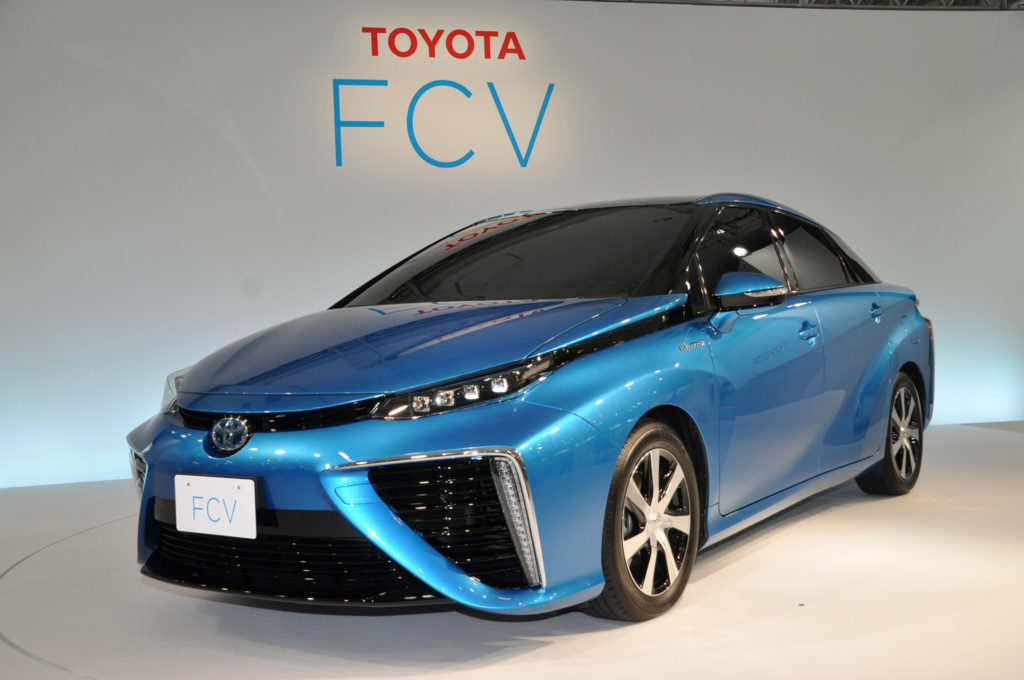
Toyota is one of several automakers that are promoting hydrogen fuel cell cars – electric cars that get their energy from fuel cells rather than batteries. Fueling one of these cars is much like filling up the tank of a gasoline-powered car, except that the fuel in question is hydrogen.
And that is the chicken-and-egg problem faced by fuel cell vehicles: it only makes sense to drive one if there are convenient hydrogen stations and nobody wants to build hydrogen stations unless there are enough fuel cell vehicles to make use of them.
Toyota has decided to get involved in producing hydrogen fuel. They plan to build a megawatt-scale carbonate fuel cell power generation plant at the Port of Long Beach, south of Los Angeles. The plant will be fueled from the waste byproducts of California livestock farms. With that bio-waste, the plant will be able to generate water, electricity and hydrogen, and in appreciable quantities.
The plant will generate 2.35 megawatts of electricity – enough to power over 2,300 average-sized homes. It will also produce 1.2 tons of hydrogen each day, enough to power 1,500 vehicles.
Toyota plans to use the new facility to supply power to its nearby Toyota Logistics operations, which will make it the first of Toyota’s facilities in North America to be 100% reliant on renewable power.
The hydrogen will be used to fill up any Toyota Mirai sedan that is in the neighborhood as well as Toyota’s Heavy Duty hydrogen fuel cell trucks. Those are class 8 trucks – ones capable of carrying over 33,000 pounds.
There are now 31 retail hydrogen stations in California: the first small steps towards solving the chicken-and-egg problem.
**********
Web Links
Toyota’s 2.2 megawatt hydrogen plant could ignite fuel-cell cars
Photo, posted October 29, 2014, courtesy of Flickr.
‘Toyota’s Hydrogen Factory’ from Earth Wise is a production of WAMC Northeast Public Radio.
Please research ramification of large scale hydrogen production and use. my understanding is that it is difficult and expensive to contain it prior to use (single atom gas is too darn tiny; natural gas piping and valves are not good enough for hydrogen). But the big problem is that if it does leak at any rate approaching today’s leakage rate of natural gas and propane, ozone layer will be damaged. The hydrogen wafting its way up to the O-3 layer (ozone) readily combines with ozone and diminishes amount of of it– last thing we need. Cheers.
Thanks for listening and for your comment!
Hydrogen transportation and storage is well-established in industry. The small size of the molecule does impose more stringent standards on fittings and equipment, but as long as these are imposed, the risks of leakage are low. Clearly, as hydrogen use expands, these standards and the various regulations associated with them must be maintained.
As for the potential dangers to the ozone layer and other aspects of the environment, there were early studies on this subject about 15 years ago that raised the alarm that this could be a problem. However, subsequent studies looked at the problem under the assumption that the expansion of hydrogen use would be accompanied by a commensurate reduction of fossil fuel use (which is quite appropriate) and determined that the overall impact on the ozone layer and other aspects of the atmosphere would in fact be positive.
This recent paper summarizes those findings:
https://www.researchgate.net/publication/237713264_Final_Report_Hydrogen_Effects_on_Climate_Stratospheric_Ozone_and_Air_Pollution